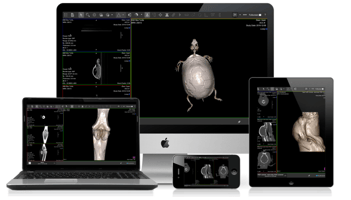How Much Does a Cloud PACS Cost?

While on-premises PACS continue to predominate many large institutions, more and more practices are considering a cloud alternative as their current PACS nears the end of its useful life. Typically, an on-premises PACS has a maximum useful life of somewhere in the range of five to ten years. If your PACS is older than 5 years, you may need to begin considering your budget for a new PACS. When you do, you might consider a cloud-based PACS as a potential replacement.
On-Site PACS
Depending upon the size and complexity of your practice, you may have paid anywhere from $50,000 to several hundred thousand dollars. That initial investment is just the capital cost of the equipment. Add in annual maintenance and some on-premises technical help to keep the hardware up and running (yes, you did purchase a maintenance plan, but you’ll still need to have a resource who can put their hands on the technology) and you are likely talking about something close to double what you paid out for the equipment itself as the total out of pocket costs for your purchase’s five-year useful life. Let’s just estimate $100,000 for what you currently have.
With improvements in technological advancements, purchasing a similar capacity on-site PACS today would cost you about 40% of that amount or about $40,000 over the same five-year period. (We detailed this calculation in this blog).
Cloud PACS
So, how much does it cost for a cloud PACS?
A lot has changed in the past decade and a half. The price of a terabyte of disk storage – roughly sufficient to store 10,000 MRI studies – cost somewhere in the range of $1,240 in 2006. Today that same storage cost is closer to $50. That is about 5% of what you used to pay for similar capacity storage.
Spinning disks (HDD) are no longer the only alternative for PACS storage. Solid-state storage (SSD) is widely available and much faster (10-20x) to access than a spinning disk. Solid-state storage costs about double what similar capacity disk storage costs. By today’s standards, that is still a bargain.
And now the cloud provides a new and different type of hardware environment that you no longer have to staff, support, maintain, or refresh when it becomes obsolete or stops working. All of that becomes your PACS vendor's responsibility. What you would have spent in capital costs, you will now convert into operating expenses.
Will this cost me more or less than if I purchased the on-premises equivalent system today?
Here’s what you can expect as your annual (and equivalent 5-year spend) for a similar capacity cloud installation.
The annual license fee for a PACS with a practice adding 2,000 new studies per year should cost around $5,000 per year. This covers all of your costs (other than perhaps the first year’s implementation fee). Over a five-year term, assuming a 5% escalation in fees per year, your total cost will be just over $27,000.
Which is Best for Me?
As you can see, a cloud PACS compares quite favorably with a total cost of ownership of an on-premises equivalent capacity PACS of $40,000. But what if you need greater capacity than 2,000 new studies per year?
To calculate this, divide the total cost by the total number of studies and finding the per study cost. In our case, that is $27,000 / 10,000 or $2.70 per study. Assume that as your study count increases, your per study cost will decrease at a declining rate. 4,000 studies per year (~80/week) will cost approximately $1.93 each; a total cost of about $39,000 over the same five-year period. This is 29% less per study than what you would pay at half the volume).
10,000 studies per year (~200/week) will cost approximately $1.44 per study for a total cost over five years of about $72,000. This is 47% less per study at this 5x increase in study volume. As your volume gets even higher, your cost per study should asymptotically approach $1.00. You get the idea!
It’s important to consider the total cost of ownership when comparing an on-premises PACS to a cloud. When you do, you will likely find that the total cost, as well as the risks and pain of having to house, power, insure, and maintain your own equipment could lead you to choose a cloud PACS.





